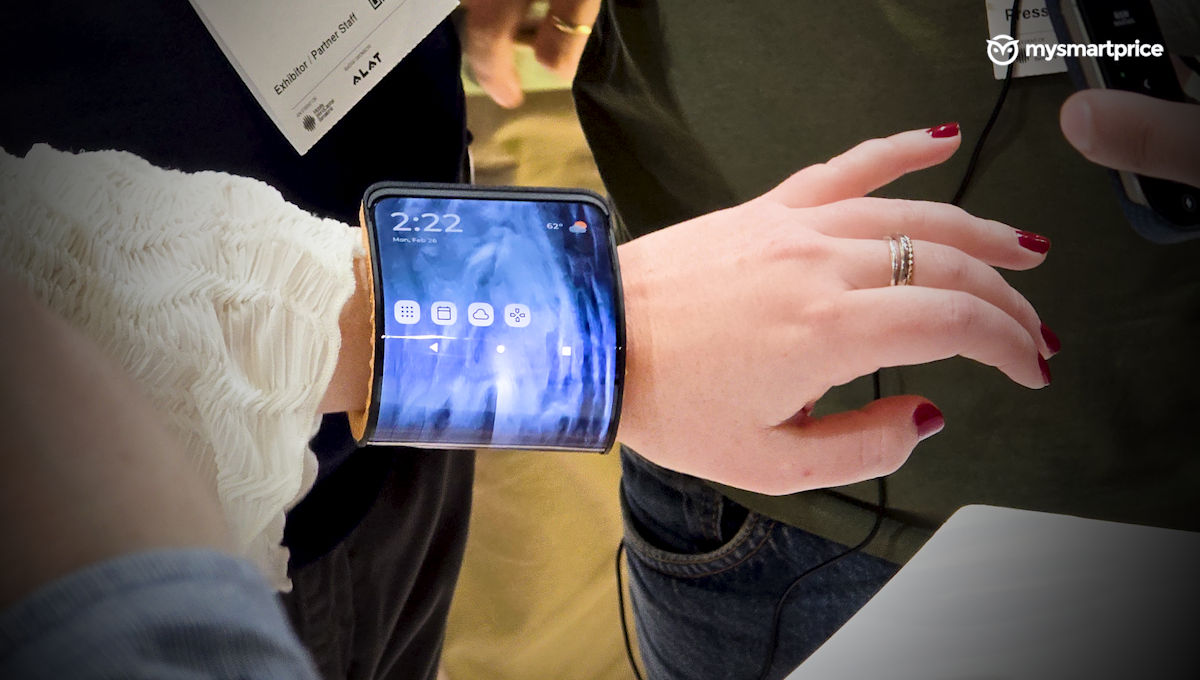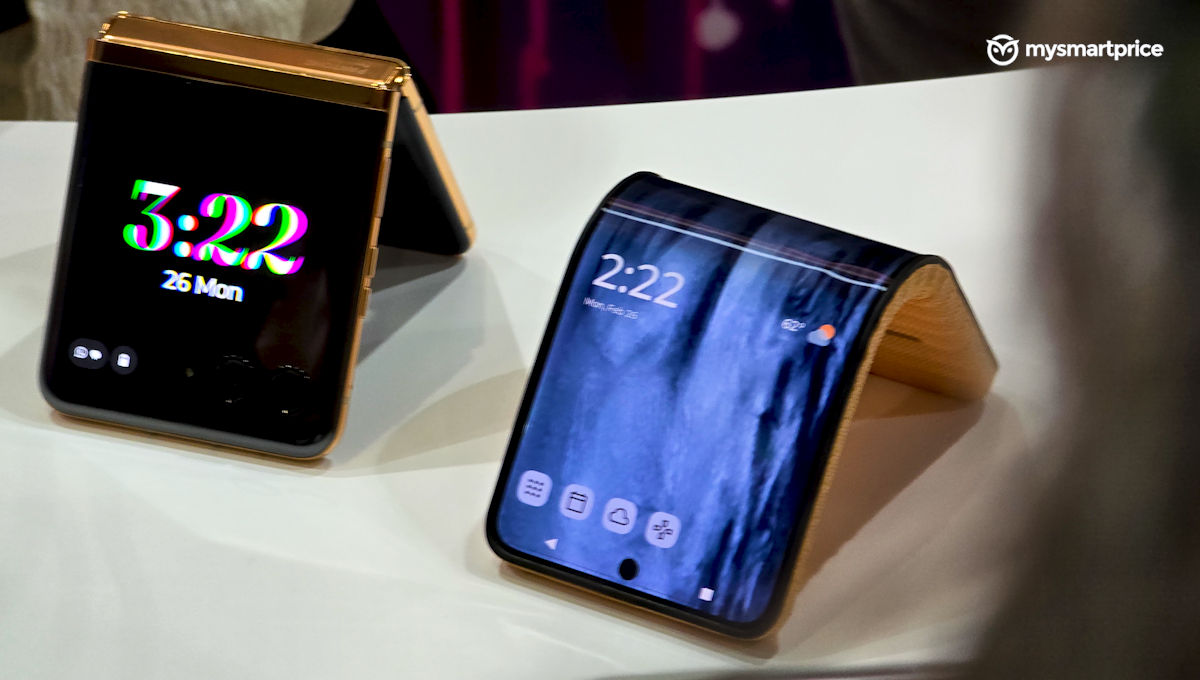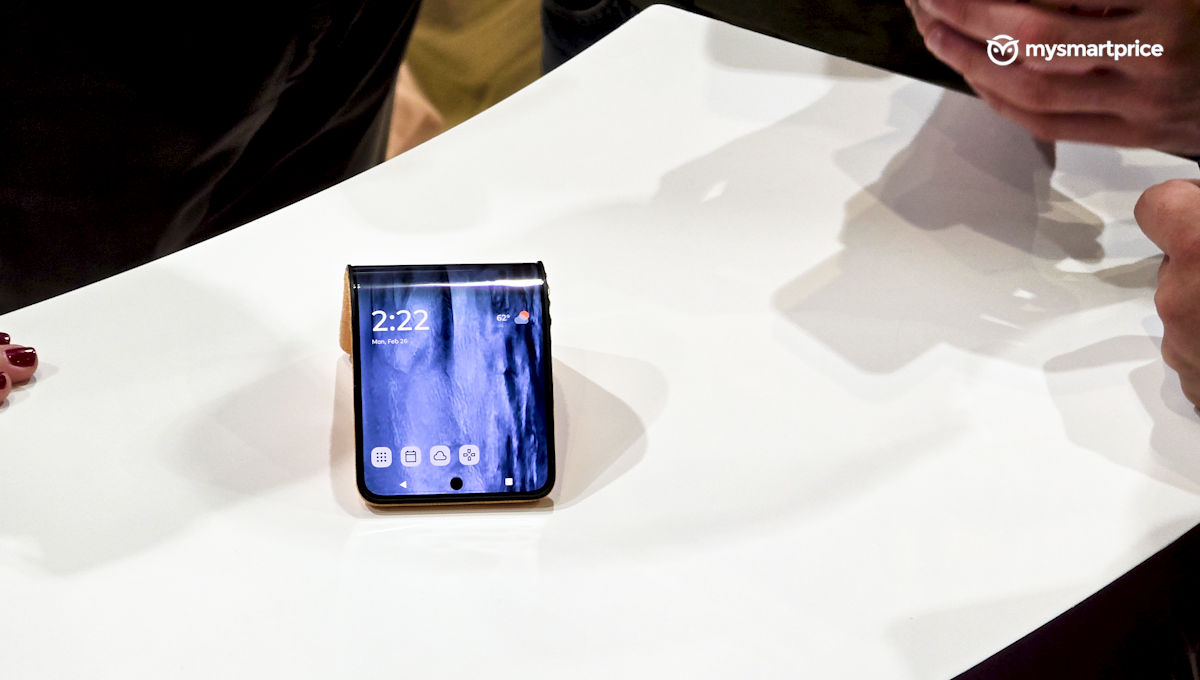
Motorola has just showcased its bendable smartphone at the ongoing MWC 2024 in Barcelona, Spain. It’s a concept device which at first glance looks exactly like a normal smartphone, which can be easily folded on your wrist like a wristband. And we are not over-simplifying the description, the phone actually works like this. Here are our first impressions of Motorola’s bendable concept smartphone.
It’s not an accessory, it’s an actual phone
Motorola’s bendable phone is like the naughtiest kid in the class, who disguises innocently in front of teachers. When you look at the phone, you can’t tell what’s so special about it with just a glance. The show starts when you start bending the phone, and it moulds into a circular shape just like how you would wrap a paper around your wrist.
Unlike traditional foldable smartphones which fold into two or three parts, Motorola’s concept device creates a roll, and introduces an entirely new category of bendable phones. Before slapping the device on your wrist, you have to wear a magnetic band first. After that, you can simply fold the phone around the band, to get it magnetically attached like a wristband, a pretty chunky one though.
The phone quickly recognizes when you wear the device on your wrist and shifts to a different UI to make all options easier to access. You can still use all the functions of your phone, run apps, and play games, while the phone stays wrapped around your wrist. You can also use the phone’s front camera in this position.
When you try Motorola’s bendable phone for the first time, it almost fulfils your childhood dream of wearing the Omintrix from Ben10. That’s how futuristic the phone feels like, once you wear it.
The Engineering behind Moto’s Bendable Phone
When you look at all the foldable smartphones in the market from Samsung, HONOR, Tecno, and even Moto, each one of them folds into two pieces at maximum, like a book. That’s because you can only bend the OLED panel of the phone, and not other internal components like the battery, PCB, or any other part. So how did Motorola pull this feat of bending the entire frame and chassis of the phone?
Instead of using a single piece of battery, the fabric woven back panel has multiple small batteries. These mini battery units are aligned inside the phone like a chain, which you can fold at the joints. The same technique is followed for other parts, which allows the phone to bend at multiple points. The hinges are placed on the side, and replicate the human spine, this is what makes it so bendy — maybe it does yoga too.
Interesting, Fascinating, But Still a Concept Though
Although foldable smartphones are slowly picking up pace in the consumer markets, we are still in the early days of this technology where the practicality of the folding aspect has not been fully explored. These devices are absolutely engineering marvels, but they are still not something that everyone can benefit from, as compared to the productivity achieved from a regular smartphone.
 Amidst this emerging market, is Motorola’s bendable phone, which undeniably has the biggest wow-factor from a smartphone in the industry right now. However, it’s not a comfortable gadget that you can use on your wrist for longer durations.
Amidst this emerging market, is Motorola’s bendable phone, which undeniably has the biggest wow-factor from a smartphone in the industry right now. However, it’s not a comfortable gadget that you can use on your wrist for longer durations.
Don’t get us wrong, though – as this concept phone has endless potential applications apart from consumer markets. Imagine astronauts or scuba divers being able to slap a bendable phone or a tablet on their wrist during a mission in surroundings like outer space and deep oceans. When we think from such perspectives, concepts like the bendable smartphone can help humanity in ways that even AI cannot imagine, but for now it's also a part of a sci-fiction future – except it's almost here.













